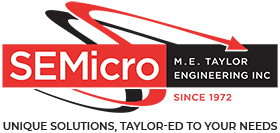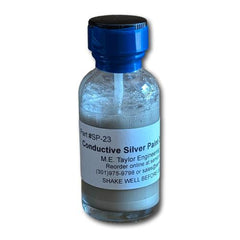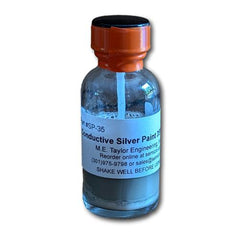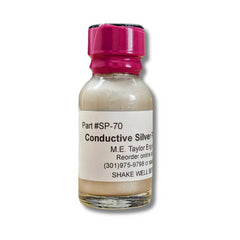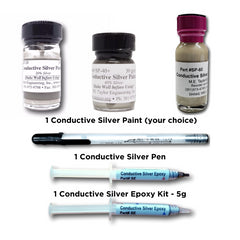No products in the cart.
Amray® 19mm ITO-Gold Scintillators
Often taken for granted or misunderstood, the scintillator is a fundamental component of your microscope. The scintillator is responsible for converting the electrons that are collected from the sample into photons. Essentially, a scintillator is a phosphor coating deposited onto a substrate. Some scintillators are composed of a single crystal alone. We have been manufacturing and recoating the finest in scintillators since 1972.
Signal-to-noise ratio, brightness, and longevity are the most critical measures of scintillator quality. At one time, response time was considered an issue but today virtually all commercially available scintillators have adequate response time for a SEM (less than 100 ns.) The smoothness of the surface and the conductivity determines the signal-to-noise ratio. When new, almost any SEM scintillator will give sufficient brightness to obtain adequate images, however, different types of scintillators lose their brightness at different rates.
Our new ITO-GOLD (pronounced eye-to-gold) SEM scintillator consists of a quartz substrate that is plated with indium tin oxide (conductive and transparent) to which a gold plated ring is electrically bonded. The P47 phosphor is then deposited. The advantages we have experienced include the gold retaining ring making better electrical contact with the scintillator without cutting into the phosphor material. The signal-to-noise ratio is better due to a decrease in the electronic noise created by a good electrical bond. There is a conductive layer under the phosphor that uniformly applies the bias voltage (10 kV usually). An aluminum overcoat is not required. In the event a pinhole develops in the phosphor, the exposed glass surface will not charge up. It is easier to handle during installation, and it is recoatable. All this leads to a longer time between scintillator changes and cost savings overall.
We also offer P47 (medium lifetime, good brightness), Pilot B (short lifetime, medium brightness), YAP:Ce or YAG:Ce (long lifetime, medium brightness), and our new LXSR scintillators (long lifetime, excellent brightness).
The overall performance of P47P as measured by brightness, cost and match to PMT range and sensitivity make it the scintillator of choice for most applications. Plastic scintillators (Pilot B) have the shortest life. All scintillators have a shortened life with surface contamination from the SEM. A few can be factory cleaned like YAP:Ce, YAG:Ce and LXSR.
Call us with your application and we can create a custom scintillator for you!
Signal-to-noise ratio, brightness, and longevity are the most critical measures of scintillator quality. At one time, response time was considered an issue but today virtually all commercially available scintillators have adequate response time for a SEM (less than 100 ns.) The smoothness of the surface and the conductivity determines the signal-to-noise ratio. When new, almost any SEM scintillator will give sufficient brightness to obtain adequate images, however, different types of scintillators lose their brightness at different rates.
Our new ITO-GOLD (pronounced eye-to-gold) SEM scintillator consists of a quartz substrate that is plated with indium tin oxide (conductive and transparent) to which a gold plated ring is electrically bonded. The P47 phosphor is then deposited. The advantages we have experienced include the gold retaining ring making better electrical contact with the scintillator without cutting into the phosphor material. The signal-to-noise ratio is better due to a decrease in the electronic noise created by a good electrical bond. There is a conductive layer under the phosphor that uniformly applies the bias voltage (10 kV usually). An aluminum overcoat is not required. In the event a pinhole develops in the phosphor, the exposed glass surface will not charge up. It is easier to handle during installation, and it is recoatable. All this leads to a longer time between scintillator changes and cost savings overall.
We also offer P47 (medium lifetime, good brightness), Pilot B (short lifetime, medium brightness), YAP:Ce or YAG:Ce (long lifetime, medium brightness), and our new LXSR scintillators (long lifetime, excellent brightness).
The overall performance of P47P as measured by brightness, cost and match to PMT range and sensitivity make it the scintillator of choice for most applications. Plastic scintillators (Pilot B) have the shortest life. All scintillators have a shortened life with surface contamination from the SEM. A few can be factory cleaned like YAP:Ce, YAG:Ce and LXSR.
Call us with your application and we can create a custom scintillator for you!
